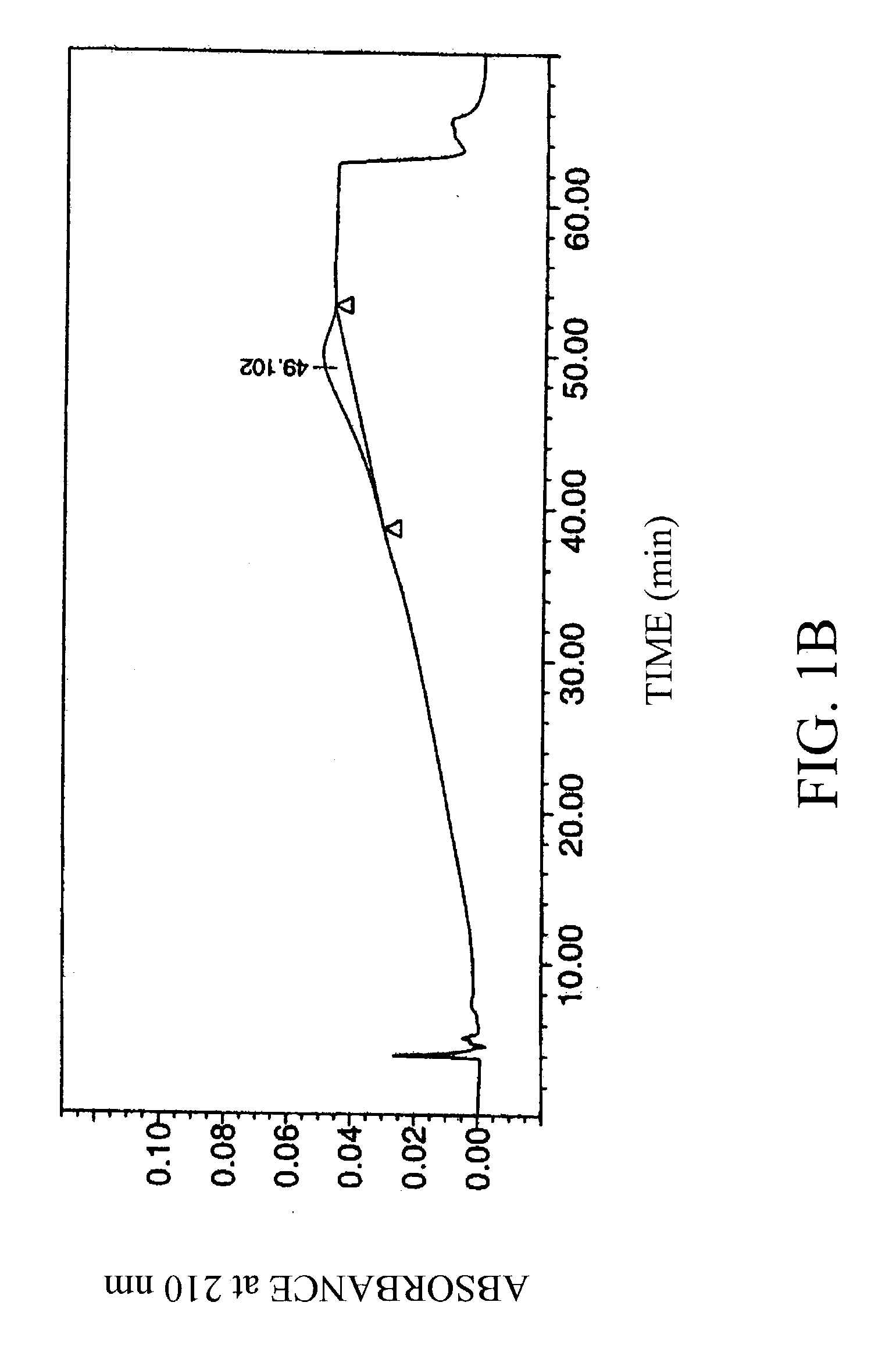Chromatographic method
a chromatographic method and chromatographic method technology, applied in the field of chromatographic methods, can solve the problems of reducing the performance of such agents, affecting the performance of separation processes, and proving very difficult to measure parameters,
- Summary
- Abstract
- Description
- Claims
- Application Information
AI Technical Summary
Benefits of technology
Problems solved by technology
Method used
Image
Examples
example 1
Determination of the Molecular Weight Distribution of Hyaluronic Acid, 0.1-1 MDa
[0034] Four laboratory standard samples of hyaluronic acid obtained from Pharmacia AB, Uppsala, Sweden, were analyzed, along with a negative control (water blank; FIG. 1A).
[0035] The concentration and average molecular weight of the hyaluronic acid standards were determined by the carbazole method (T Bitter and H M Muir, Anal Biochem 4:330-334 (1962)) and by LALLS, respectively. Average molecular weights of the samples were 0.1, 0.25, 0.5 and 1 MDa. The hyaluronic acid standards were of high purity (>97%), and were diluted to 1 mg / ml in 10 mM Tris / HCl, 20 mM sodium sulfate, pH 8.0.
[0036] The hyaluronic acid samples were chromatographed using an HPLC system equipped with a strong anionic-exchange chromatography column, PL-SAX-4000 (4000 A, 8 .mu.m, 150.times.4.6 mm I.D.), and a PL-SAX precolumn, both purchased from Polymer Laboratories, Ltd (Church Stretton, UK). The functional group of the polymer column...
example 2
Determination of the Molecular Weight Distribution of Hyaluronic Acid, 1-5 MDa
[0040] The same equipment and method as in Example 1 was used, except that the hyaluronic acid standard samples used for the standard curve had molecular weights of 1, 3, 4 and 5 MDa, and that the mobile phase A contained 10 mM sodium phosphate, 175 mM sodium sulfate, pH 7.0. Again, a negative control water blank was also analyzed (FIG. 2A).
[0041] The molecular weight standards of hyaluronic acid, 1-5 MDa, were eluted with retention times of 43-45 min (FIGS. 2B-2E). A 4 MDa HA standard sample, analyzed as an unknown sample in the end of the sequence, had a retention time of 43.41 min (FIG. 4B), which gave a peak molecular weight of 4.0 MDa, calculated from the formula in FIG. 3B.
[0042] By manual splitting of the peak at the retention times for the respective molecular weight standard, as shown in FIG. 4B, the following molecular weight distribution was obtained:
2 5 MDa: 24%
[0043] Through slightly modifying...
PUM
| Property | Measurement | Unit |
|---|---|---|
| average molecular weight | aaaaa | aaaaa |
| average molecular weight | aaaaa | aaaaa |
| average molecular weight | aaaaa | aaaaa |
Abstract
Description
Claims
Application Information
 Login to View More
Login to View More - R&D
- Intellectual Property
- Life Sciences
- Materials
- Tech Scout
- Unparalleled Data Quality
- Higher Quality Content
- 60% Fewer Hallucinations
Browse by: Latest US Patents, China's latest patents, Technical Efficacy Thesaurus, Application Domain, Technology Topic, Popular Technical Reports.
© 2025 PatSnap. All rights reserved.Legal|Privacy policy|Modern Slavery Act Transparency Statement|Sitemap|About US| Contact US: help@patsnap.com



